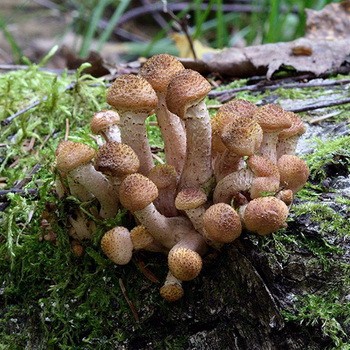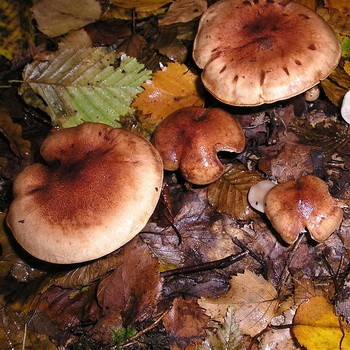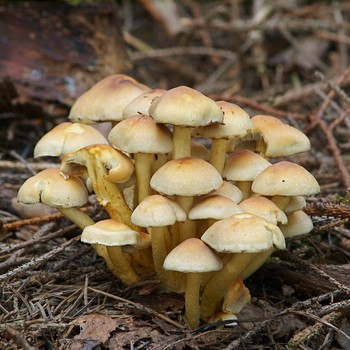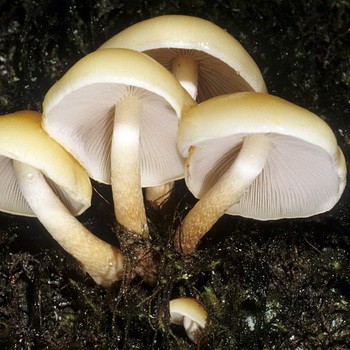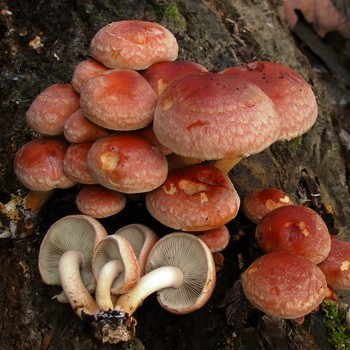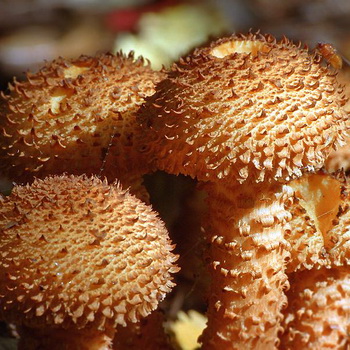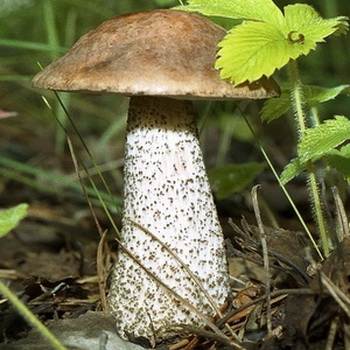Thicket-footed honey agaric: description of edible mushroom
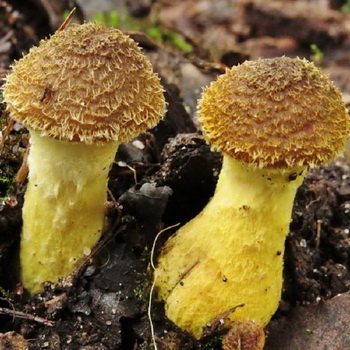
Content
Description of the thick footed armlet (armillaria lutea)
Latin scum means “bracelet”, and this is not surprising, because the form of growth of these mushrooms around hemp or trees has a kind of ring. But thick-legged honey agarics grow on a completely different principle.
For example, the honey flyfish has always been considered an autumn species. However, this was until the specialists noticed some distinctive signs from autumn mushrooms. The first sign is the growing season, and the second is the habitat, that is, where the autumn thicket leg grows. It was noticed that this mushroom never grows on the wood of a living tree. The thicket-footed mushroom mushroom can cover large areas of the forest with a yellow blanket, which is immediately noticeable in the autumn forest with its colors.
We bring to your attention a detailed description of the honeyfish Armillaria lutea.
Latin name: Armillaria lutea;
Family: Physalacriaceae;
Gender: Honey flyfish;
Hat: in diameter from 2 to 10 cm, at a young age has a broad conical shape with curled edges. Then it unfolds like a burdock and lowers the edges. The color of the hats of young specimens varies from dark brown to light brown or even pink. The edges are sometimes white, then turn yellow and even become brown. In the center of the hat there are conical flakes of gray or light brown color. Approaching the edge of the hat, the scales become single and are in a lying position. In adults, the flakes remain only closer to the center.
Records: honey agaric has very frequent plates that descend to the leg. Young honey mushrooms have white plates, in the process of growth they acquire a brownish tint.
Pulp: has a whitish color and a faint cheesy smell with an astringent taste.
Leg: the mushroom has a cylindrical, club-shaped or bulbous stalk with a thickened base. The leg has a "skirt" only in young mushrooms, in adult specimens only the remains of the bedspread are visible. The film ring itself is fibrous, white, sometimes there are brown flakes on the edge.
The honeybill, the photo of which can be seen below, is considered a saprophyte:
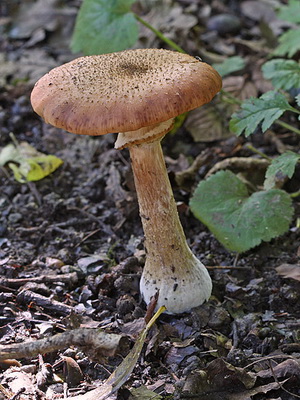
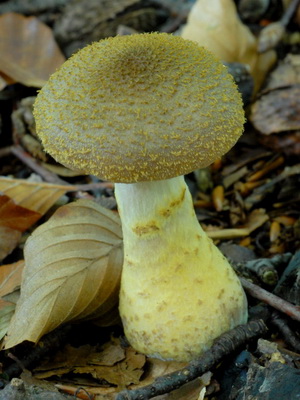
He loves to grow on beautiful foliage or decaying stumps. Less commonly, this type of fungus parasitizes on dying trees.
Where the thick-footed honey mushrooms grow
The thick-footed honey fly begins its growth in August. Harvest time lasts on average until mid-November. It grows on rotten trees, right on the soil, sometimes it can be found on a bed of spruce needles. It never affects lively and healthy trees. Although it grows in large groups, however, it does not gather in bunches, like ordinary autumn mushrooms.
Mushroom pickers note that honey mushrooms grow best in temperate climates. Then the size of the families of this species can impress even experienced fans of "silent hunting". In addition to being very fertile, the thick-legged honey agaric is pleasantly surprising in its persistence.If you find a colony of such fungi, come to this place for several years in a row. See: you will harvest more than in past years.
It should be noted that the honeybill has no similar false or poisonous relatives similar in appearance. Even knowledgeable mushroom pickers very often confuse them with autumn mushrooms and consider them to be one species. These honey mushrooms spread almost completely on the surface of the forest litter. Peak data collection of fruiting bodies occurs in October and early November, which distinguishes them from the usual autumn mushrooms, which are collected in September.
For culinary experts, honeyfish are considered one of the most delicious mushrooms. They even adapted to grow not only at home, but also on an industrial scale. Note that these mushrooms lend themselves to the same pretreatment processes as autumn mushrooms. A variety of dishes are prepared from them: soups, julienne, fries, salads. They are pickled, salted, dried, frozen and even fermented.
Now, having found out the description and looking at the photo of the honey footbill, you can safely head into the forest and collect this amazingly tasty and healthy mushroom.
